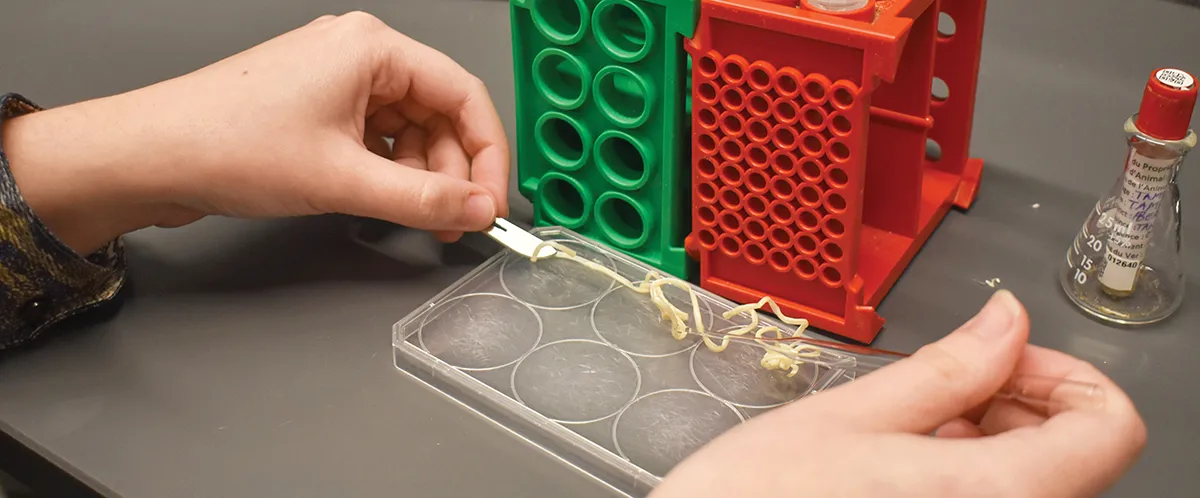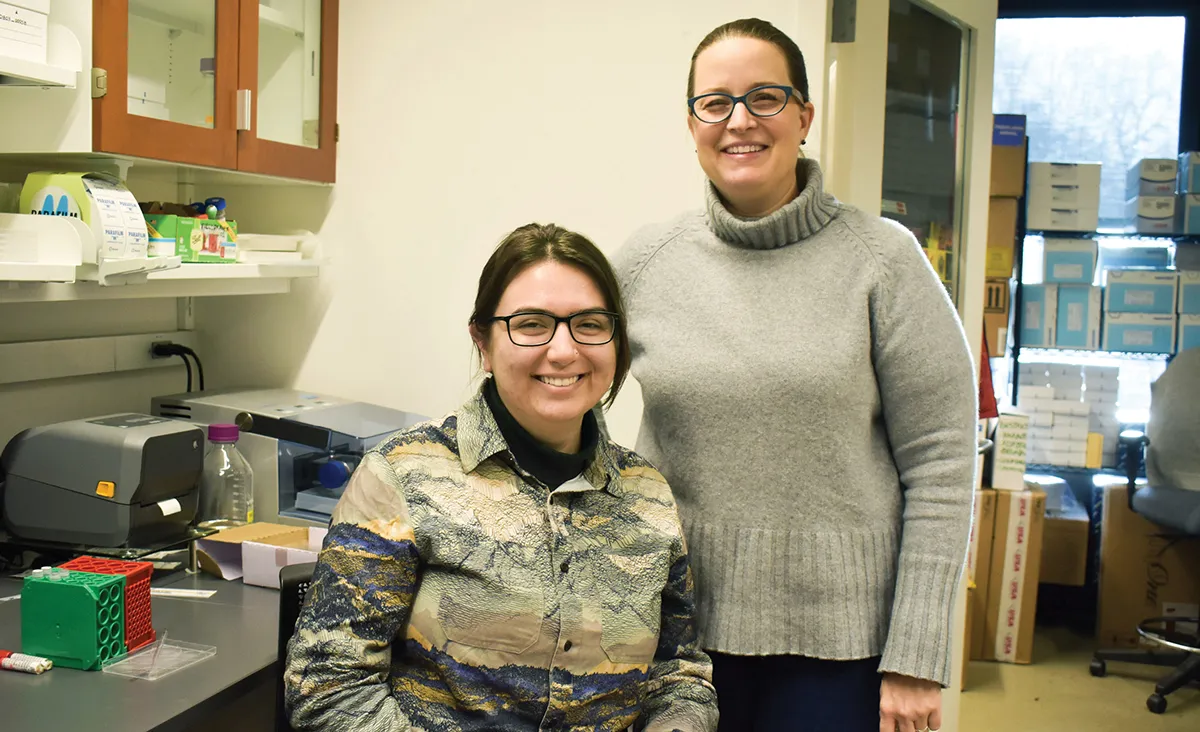

Vassar Researchers Work to Eradicate Dangerous Parasite
But as is the case with many health threats, the final stages of stamping it out are the hardest, and some of the research needed to support that work is being performed in a laboratory in Olmsted Hall on the Vassar campus. Visiting Scholar Elizabeth Thiele, who holds a PhD in ecological and evolutionary biology from Purdue University, has been performing research on Guinea worms taken principally from Chad, one of the last places where they are posing a threat.
“We get samples of worms collected from dogs, as well as cats, baboons, and humans, and through genetic sequencing, we can gain a better understanding of the parasite’s transmission,” Thiele explained.
The worm, which can grow up to a meter in length, has been common in many parts of the world since antiquity. Some historians ascribe biblical references of a “fiery serpent” to the Guinea worm because, after 10 to 14 months inside the host, an adult female worm emerges through an excruciatingly painful, burning blister it generates in the host’s skin. “While the parasite is not usually deadly by itself,” Thiele said, “it can debilitate its victims—often subsistence farmers and other rural workers, who then find it hard to survive.”
Thiele’s work is part of ongoing efforts of the Carter Center in collaboration with national ministries of health in affected countries and the World Health Organization. Her work at Vassar is funded directly by the Carter Center, a not-for-profit, nongovernmental organization founded by former President Jimmy Carter and his wife, the late Rosalynn Carter.

“There is no medical intervention, such as a vaccine or preventative drug,” Thiele explained. “The primary means of preventing infection is by disrupting the parasite’s life cycle. Emerging worms that are detected by village health workers are removed slowly and in a controlled manner over a length of time that can span days to weeks—this is to protect the infected individual from wound infections or complications and to prevent contamination of local water sources where the parasite’s intermediate host lives. Water bodies suspected to have been contaminated with parasite larvae are treated with a broad-spectrum larvicide to kill the intermediate hosts.”
Thiele and the Carter Center team hope that insights provided by the genetic data, namely a more nuanced understanding of the parasite’s transmission patterns in the remaining endemic countries, can assist local elimination programs with effectively allocating available resources and designing targeted prevention strategies.
The final efforts to stamp out the last Guinea worms have been hampered principally by unexpected infections in non-human animal hosts and by political unrest in the areas where the parasites still survive, but there is reason to believe the parasite can be completely eradicated by the Carter Center’s goal of 2030. “In 1995, during the Second Sudanese Civil War, Jimmy Carter helped to negotiate a ceasefire specifically to allow health workers to access villages endemic for Guinea worm and begin to implement control and prevention programs and provide primary health care,” Thiele said. At the time, it was the longest humanitarian cease-fire in history.
Thiele’s post-baccalaureate research assistant, Morgan Stephens ’23, performs the initial processing and cataloging of the worms that are sent to the lab. Stephens has been working with Thiele since they graduated from Vassar with a degree in biology last spring. “I applied for the job because I’m interested in pursuing a career in public health and wanted to gain some research experience before applying for graduate school,” they said. “Doing this work has been more purposeful than simply going to class,” they added. “I want to continue to do research in grad school on insects and other creatures that harm humans. It matters that this work gets done.”